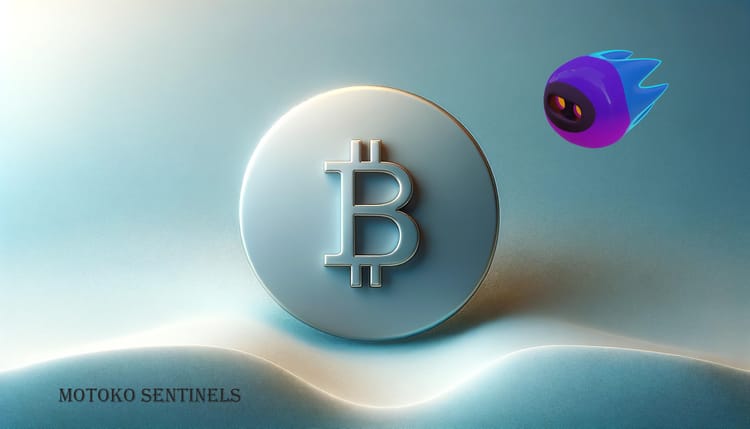Uncovering the Hidden World of NFT Wash Trading: Risks, Consequences, and Strategies to Safeguard the Digital Art Market

In recent years, Non-Fungible Tokens (NFTs) have emerged as a popular digital asset class that has transformed the way we think about art, collectibles, and ownership. As the NFT market continues to grow exponentially, it has also attracted various forms of market manipulation, with NFT wash trading being one of the most prominent.
Wash trading, a term familiar to traditional markets is the practice of buying and selling the same asset to create the illusion of high trading volume and demand. This deceptive tactic has found its way into the world of cryptocurrency and NFTs, causing concern among investors, artists, and marketplaces.
The impact of wash trading on the NFT market is significant, as it distorts market data, undermines the credibility of the ecosystem, and can lead to financial loss for unsuspecting investors. As such, understanding the intricacies of NFT wash trading and its consequences is crucial for anyone participating in this rapidly growing market.
This article aims to provide an in-depth analysis of NFT wash trading, its motivations, and its effects on the market. It also explores the warning signs and measures to combat this form of manipulation. By shedding light on this concerning practice, we hope to contribute to the development of a more transparent and trustworthy NFT ecosystem.
NFT Wash Trading Unraveled: How it Works and Its Connection to Cryptocurrency
As NFTs gain traction within the digital art and collectibles space, the phenomenon of wash trading has increasingly become a pressing issue. To better understand how NFT wash trading operates, it is essential to first grasp the concept of wash trading in traditional markets. Wash trading involves an investor or a group of investors simultaneously buying and selling the same asset to create the illusion of high trading volume, liquidity, and demand. This deceptive practice manipulates the asset's price and attracts new, unsuspecting investors.
NFT wash trading shares the same principles but is adapted to the unique characteristics of the NFT market. In this context, an individual or a group of colluding individuals buy and sell the same NFT between their wallets or accounts, artificially inflating its price and trading volume. The role of cryptocurrency in NFT wash trading is crucial, as it provides a decentralized, pseudonymous environment that makes it easier for malicious actors to engage in such activities without immediate detection.
The primary motivations behind NFT wash trading include creating the illusion of demand and liquidity, which can entice new investors and collectors to enter the market. Additionally, this practice can be used to inflate the perceived value of an artist's work or a particular collection, potentially leading to a snowball effect that further drives up prices.
Here are some notable examples that have generated discussions around the possibility of wash trading:
- The CryptoPunks Market: In 2021, there were reports of suspicious trading activity surrounding CryptoPunks, one of the earliest and most valuable NFT collections. Some experts speculated that certain transactions might have involved wash trading, with the intent to manipulate prices and attract more buyers.

- Bored Ape Yacht Club: This highly popular NFT collection has also been subject to wash trading speculations. Observers have pointed out that some transactions involving Bored Ape NFTs may be indicative of wash trading, as they involved rapid buying and selling between the same wallets or accounts, leading to artificially inflated prices.
- Rarible: In 2020, the NFT marketplace Rarible faced allegations of wash trading when it was reported that some users were buying and selling their own NFTs to boost their platform rankings and earn more of the native RARI token. Although Rarible introduced measures to address these issues, the incident highlighted the potential for wash trading in the NFT space.
Motivations Behind NFT Wash Trading: Uncovering the Driving Forces
Understanding the motivations behind NFT wash trading is crucial for identifying and preventing such practices in the growing digital art and collectibles market. Market participants can better protect themselves and contribute to a more transparent and trustworthy NFT ecosystem by uncovering the driving forces behind these deceptive tactics.
Some of the primary motivations behind NFT wash trading include:
- Artificially inflating NFT prices: Wash trading can be used to manipulate the perceived value of an NFT, driving up its price and attracting new, unsuspecting investors. By creating a false sense of demand and value, malicious actors can profit from inflated prices and unsuspecting buyers.
- Creating the illusion of demand and liquidity: Wash trading can give the impression that a particular NFT or collection has high demand and liquidity. This illusion can draw in new investors and collectors, who may be more likely to purchase NFTs that appear popular and valuable.
- Tax evasion and money laundering: NFT wash trading can also be used for illicit purposes, such as tax evasion and money laundering. By moving funds through multiple transactions and wallets, malicious actors can obfuscate the origin and destination of the funds, making them difficult to trace.
- Attracting new investors: Wash trading can create a false sense of market activity, which can be used to entice new investors to enter the market, hoping to capitalize on the apparent popularity of certain NFTs or collections.
Consequences of NFT Wash Trading: Understanding the Impact on the Market and Participants
NFT wash trading has several negative consequences that can affect both the NFT market and individual market participants. By understanding these consequences, stakeholders can better appreciate the importance of addressing and preventing wash trading in the NFT ecosystem.
Some of the key consequences of NFT wash trading include:
- Negative impact on NFT market credibility: Wash trading undermines the credibility and trustworthiness of the NFT market. This can deter potential investors and collectors from participating in the market, ultimately stifling its growth and development.
- Distorted market data and analytics: Wash trading can skew market data, making it difficult for investors and collectors to accurately assess the value of NFTs and make informed decisions. This distortion can lead to poor investment choices and financial losses.
- Financial loss for unsuspecting investors: Wash trading can result in significant financial losses for unsuspecting investors who purchase overvalued NFTs, only to find that their true value is much lower than the manipulated price.
- Legal implications and regulatory actions: Wash trading is a fraudulent activity that can lead to legal repercussions and regulatory actions against those involved. This can result in fines, penalties, and even criminal charges for the perpetrators.
Identifying NFT Wash Trading: Red Flags and Warning Signs to Watch Out For
Investors, artists, and collectors must be aware of the warning signs and red flags that may indicate potential wash trading activities. By staying vigilant, market participants can minimize their risk of financial loss and protect the integrity of the NFT market.
Some of the most common red flags and warning signs of NFT wash trading include:
- Unusually high trading volume: A sudden surge in trading volume for a specific NFT or collection without any apparent reason or news could be a sign of wash trading. It is essential to analyze the trading volume in comparison to similar assets or the broader market to determine if the activity is genuine.
- Suspicious NFT price fluctuations: Rapid and unusual price changes that do not align with market trends or the asset's inherent value can indicate wash trading. Monitoring and comparing price movements to historical data and peer assets can help identify anomalies.
- Recurring transactions between the same wallet addresses: Wash trading often involves the same wallet addresses or accounts conducting multiple transactions with the same NFT. Scrutinizing transaction histories for patterns of repetitive transactions between the same parties can help uncover potential wash trading.
- Inconsistent or unrealistic historical sales data: In some cases, wash traders may manipulate an NFT's sales history to create an illusion of high demand and value. Examining the sales data for inconsistencies, such as abrupt changes in pricing or an unusual number of sales within a short period, can reveal possible wash trading activities.
By keeping an eye on these warning signs and red flags, NFT market participants can be better equipped to detect and avoid potential wash trading schemes. In doing so, they can contribute to fostering a more transparent, trustworthy, and sustainable NFT ecosystem.
Tackling NFT Wash Trading: Measures and Best Practices to Foster a Transparent and Trustworthy Ecosystem
As NFT wash trading continues to pose challenges for the NFT market, it is crucial for market participants and platforms to implement measures and adopt best practices that combat this manipulative tactic.
Here are some key measures and best practices for tackling NFT wash trading:
- Enhanced regulatory oversight: Regulatory bodies can play a vital role in combating wash trading by establishing clear guidelines and rules for NFT market participants. By monitoring the market and enforcing penalties for those engaging in wash trading, regulators can help deter malicious actors and maintain market integrity.
- Community-driven initiatives and transparency: The NFT community can contribute to curbing wash trading by promoting transparency, sharing information about suspicious activities, and reporting potential cases of manipulation. An informed and proactive community can act as a strong deterrent against wash trading.
- Advanced analytics and machine learning tools: Marketplaces and platforms can leverage advanced analytics and machine learning algorithms to detect patterns indicative of wash trading. By automating the detection process, these tools can help identify suspicious activities more efficiently and accurately.
- Best practices for NFT marketplaces and platforms: NFT marketplaces and platforms can implement best practices, such as strict Know Your Customer (KYC) procedures, transaction monitoring, and user education to minimize the risk of wash trading. By fostering a secure and transparent environment, marketplaces can protect their users and uphold the integrity of the NFT ecosystem.
In conclusion, the collaborative effort of regulators, marketplaces, platforms, and the NFT community is vital in addressing NFT wash trading. By implementing robust measures and adopting best practices, stakeholders can ensure a transparent, trustworthy, and sustainable NFT market for all participants.
The Future of Combating NFT Wash Trading: Innovations, Trends, and the Role of Emerging Technologies
As the NFT market continues to expand, new innovations and trends are emerging to help combat NFT wash trading and foster a transparent and trustworthy ecosystem. By leveraging cutting-edge technologies and adopting novel approaches, market participants can detect, prevent, and counteract wash trading activities more effectively.
The following are some key innovations, trends, and emerging technologies poised to play a significant role in combating NFT wash trading:
- Blockchain analytics and forensics: The use of blockchain analytics and forensic tools can help identify and trace wash trading activities by examining transaction patterns and wallet addresses. These tools can uncover hidden connections between seemingly unrelated transactions, allowing for a more comprehensive understanding of potential wash trading schemes.
- Decentralized identity solutions: Decentralized identity solutions can help verify the real-world identities of NFT market participants while preserving their privacy. By implementing such solutions, NFT marketplaces and platforms can mitigate the risk of wash trading by ensuring that users are held accountable for their actions.
- Crowd intelligence and sentiment analysis: Tapping into the collective intelligence of the NFT community through social media monitoring and sentiment analysis can provide valuable insights into potential wash trading activities. By analyzing market sentiment and trends, stakeholders can identify anomalies and red flags that may be indicative of wash trading.
- AI-driven market surveillance: Artificial intelligence and machine learning algorithms can be employed to monitor the NFT market continuously and detect suspicious patterns in real time. This proactive approach to market surveillance can help identify and prevent wash trading activities before they cause significant damage to the ecosystem.
Conclusion
In conclusion, the issue of wash trading in the NFT market has become an increasing concern as the sector continues to grow and attract more investors. As seen in some high-profile NFT collections, the potential for manipulation highlights the need for increased transparency, effective regulations, and collaborative efforts among stakeholders to combat this deceptive practice.
As the NFT ecosystem evolves, leveraging advanced technologies like blockchain analytics, AI-driven market surveillance, and decentralized identity solutions will play a crucial role in detecting and preventing wash trading activities. Furthermore, fostering a culture of education and awareness among market participants will empower them to make informed decisions and contribute to a more secure, transparent, and sustainable NFT market.
By working together, the NFT community, platforms, marketplaces, and regulators can establish best practices and guidelines that will safeguard the integrity of the market and protect investors from potential financial losses. By addressing the challenges posed by wash trading and other forms of market manipulation, the NFT ecosystem can continue to thrive and unlock new opportunities for artists, collectors, and investors alike.
Please share your thoughts on the article by clicking below Emoji ...
Disclosure
*The information provided on this cryptocurrency blog is for educational and informational purposes only and should not be construed as financial, investment, or trading advice. The authors, contributors, and administrators of this blog are not licensed financial professionals and do not hold any formal qualifications in the fields of finance, economics, or cryptocurrencies.
The content on this blog is based on the authors' personal opinions, experiences, and research, and should not be considered as professional financial guidance. While we strive to provide accurate, up-to-date, and reliable information, we cannot guarantee the accuracy or completeness of the information presented. Cryptocurrency markets are highly volatile, and investments in cryptocurrencies and related assets carry a substantial risk of loss.
Before making any financial decisions or investments, you should consult with a qualified financial advisor or perform your own research and analysis. Any actions taken based on the information provided on this blog are at your own risk, and the authors, contributors, and administrators of this blog cannot be held liable for any losses or damages resulting from the use of the information found herein.
By using this blog, you acknowledge that you have read and understood this disclosure and agree to assume full responsibility for any decisions or actions you take based on the information provided.*







